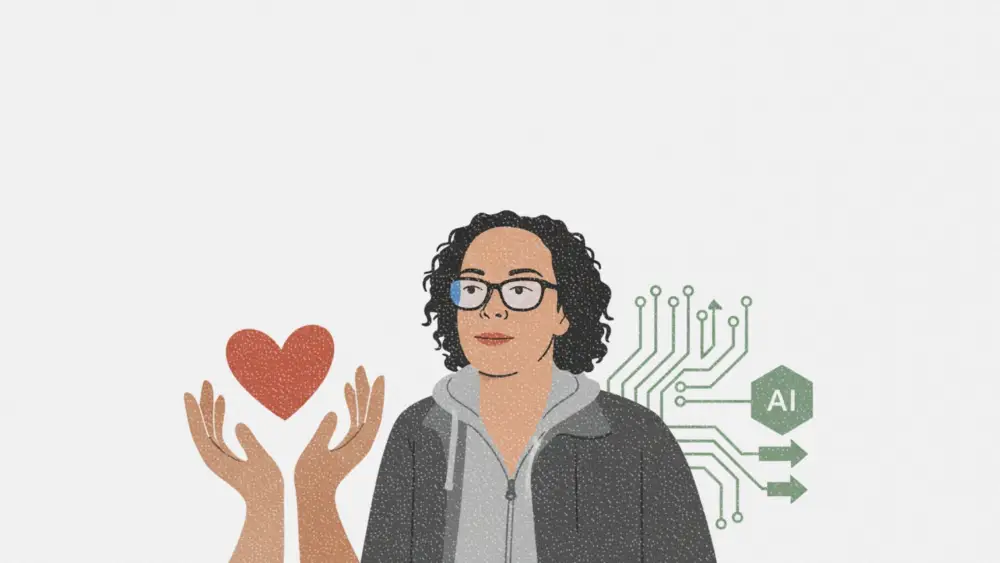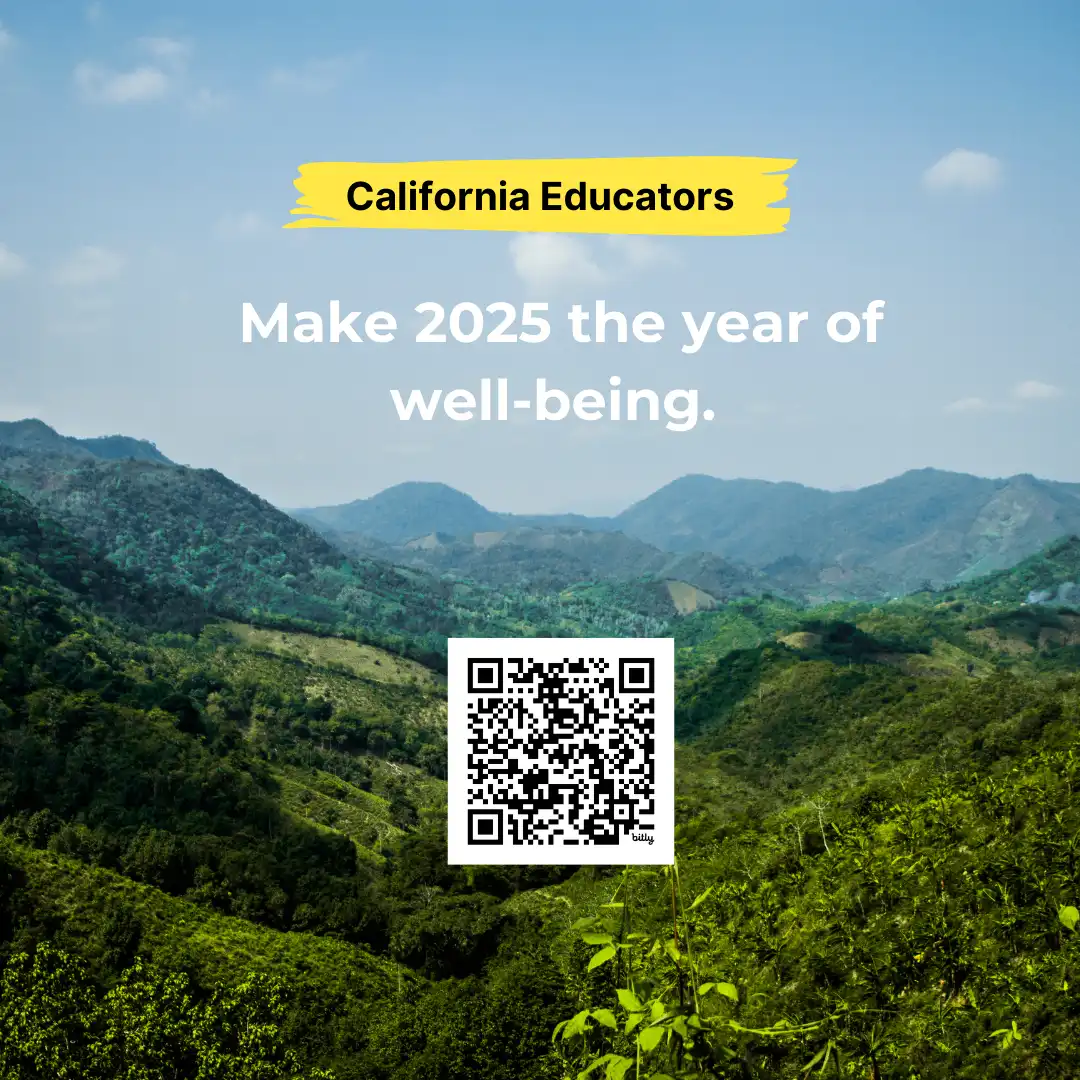AI can write copy, but it can't write compassion: Maria Breaux on human-first marketing
Maria Breaux rewrites government forms with compassion, achieves fundraising goals at 125%, and explains why AI can't replace the human voice in marketing—even when everyone's trying to automate everything.

Freelance marketing specialist and copywriter Maria Breaux doesn't buy the hype around AI-generated content. After more than a decade working across education, pharma, and tech—writing for brands like Pinterest, Marin Software, and Common Sense Media—she's watched too many marketers mistake efficiency for effectiveness.
Her approach? Compassionate marketing. "You're writing to a human being who may be suffering from something," she says. It's a framework that treats audiences as humans first, metrics second. And it's delivered results: 125% of fundraising goals at Common Sense Media and campaigns that consistently beat industry benchmarks.
Maria is a freelance marketing specialist and copywriter based in San Francisco. Her recent portfolio includes work with the Greater Good Science Center at UC Berkeley, where she helped promote CalHOPE Student Support—a mental health and well-being initiative for California K-12 schools.
Beyond her marketing work, Maria is an award-winning independent filmmaker currently writing a memoir titled "Compassion Guy" about her late brother, David Breaux. David, a Stanford graduate, spent 14 years standing on a street corner in Davis, California, asking passersby to define compassion before he was tragically killed in 2023. Maria recently completed the first draft and has been accepted into the prestigious Hedgebrook Writer-in-Residence program.
Speaking with ContentGrip, Maria shares why AI can't replace human judgment in copywriting, how empathy-driven campaigns exceeded targets, and what separates marketing that converts from marketing that gets ignored.
Short on time?
- Why AI still can't write like a human
- The compassionate marketing framework
- What makes emails and landing pages convert
- Case study: 125% fundraising campaign and educator engagement
- Brand voice and the one-page style guide rule
Why AI still can't write like a human
Many marketers treat AI like a magic button. Maria has seen this play out across industries, and she's skeptical.
"I personally haven't interacted with any writer who said that they took anything verbatim from ChatGPT and used it as their own words," she says. "We're not yet at a point of AI-generated content sounding exactly like someone you're having a face-to-face conversation with."
For Maria, the issue is ethics. In regulated spaces like pharma or healthcare where she's spent years writing copy, authenticity isn't optional.
"People can tell right away when it's insincere," she explains. "It's just a few words that are off."
She uses ChatGPT strategically—as an advanced thesaurus for word alternatives and tone parameters. She uses Grammarly for spell-checking. But she draws a hard line: AI is a writing assistant, not a writer.
This philosophy extends beyond tools. It shapes her entire approach to marketing—which brings us to the framework that's driven her most successful campaigns.

The compassionate marketing framework
Last year, Maria had her driver's license temporarily suspended due to a medical condition. The DMV notice arrived as a cold, impersonal form letter. So she rewrote it—acknowledging the challenge, expressing empathy, and clearly outlining next steps. When Maria shared the rewrite on LinkedIn, the response was warm—people recognized the difference empathy makes.
"A little compassion goes such a long way," she says. "You're writing to a human being who may be suffering from something. To not recognize that does a huge disservice."
Compassionate marketing isn't about softening the message. It's about understanding where the audience is coming from before you tell them where you want them to go.
"If you're only talking about you, you're that person in the bar who just keeps talking and people's eyes are glazing over," she explains.
Maria references the hero's journey framework: the customer is the hero, the brand is the guide. "You're leading them to find out something more about themselves, or to help them get to where they want to go a little bit easier."
But frameworks only matter if they convert. So what actually works?

What makes emails and landing pages convert
Maria spent years at Marin Software and Pinterest running performance campaigns. The fundamentals haven't changed: personalization, clarity, and brevity.
She points to SMIT—the Single Most Important Thing. Every email and landing page needs one clear takeaway.
For an educator campaign at Greater Good Science Center, the SMIT was: "You are invited into a gathering of educators." Short, clear, community-focused.
"The single most important thing should lead the message so people get what they're looking for right away," Maria explains.
Real personalization goes deeper than first names. One education nonprofit she worked with tailored every newsletter to individual preferences—no generic content. "Their open rates are through the roof because it's 100% personalized."
This philosophy isn't theoretical. Maria's track record proves it works.
Case study: 125% fundraising and educator engagement

At Common Sense Media, Maria's email campaigns consistently exceeded targets—125% of mid-year fundraising goals and 114% year-end.
At Greater Good Science Center, one social ad became the campaign's highest performer: lush green mountains under blue sky with "California educators, make 2025 the year of well-being."
"Who doesn't want well-being?" she says. The ad didn't push features or benefits. It acknowledged burnout. It offered peace.
This aligns with what Maria sees as B2B marketing's biggest mistake: leading with "how great we are" instead of "how we understand what you're going through."
But consistency across channels requires something most startups overlook.
What storytelling means in the AI era
Maria is a filmmaker who's written, produced, and directed independent features. She understands narrative structure at a level most marketers don't. And she's not worried about AI replacing storytelling.
"Storytelling will always be here," she says. "It's as old as human language, and it's so basic to the human experience."
Generative AI is trained on billions of data points from human content. But it's only as good as the humanity brought to the final draft.
"You can't cobble together storytelling," she says. "We're always going to need humanity and a human touch—that person who's sitting in front of a computer or holding your phone, consuming that message."
Whether it's a fundraising email, a landing page, or a social ad, she reminds herself there's a real person on the other end—someone dealing with challenges, making decisions, hoping for solutions.
That's compassionate marketing. And in a world racing to automate, it's the competitive edge most brands are missing.




